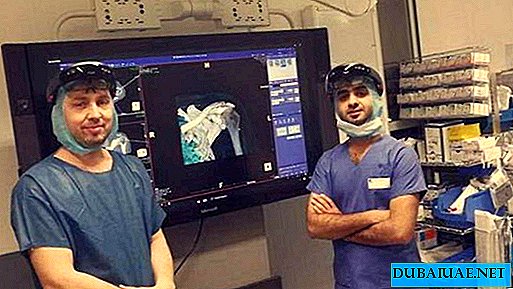Once upon a time on the territory of the current sandy Arabian Peninsula, forests rustled and trumpeted elephants. Crocodiles lurked in warm, full-flowing rivers, and tall grasses hid stunted horses, which could be the ancestors of modern Arabian horses.
In the past decade, 240 kilometers west of Abu Dhabi, near a natural reserve located on the island of Syr Bani Yas, archaeologists have made finds that shed light on the darkness of a million years ago. Among the discoveries are the petrified head of an elephant, the jaw of a crocodile, the mouth of an extinct animal belonging to the species of hippopotamus, and the remains of a hipparion horse that has not survived to this day, the size of a pony worn on ancient Arabian steppes on three-toed hooves.
The finds of paleontologists in the UAE indicate that millions of years ago, in the era of the Late Miocene, the local nature was completely different from what it is now. The first evidence that herbivorous and predatory dinosaurs lived on the Arabian Peninsula was received in 1982 in the southeastern part of the peninsula - in the Sultanate of Oman. Later, several tens of kilometers from the capital of the country, Muscat, there was evidence that giant diplodocus lived here in ancient forests. Here was the last abode of dinosaurs, extinct 65 million years ago. Omani scholar Samir Khan, who works at the University of Sultan Qaboos, believes that the fossil remains found in the territory of the sultanate belong to this period.
The first finds were made in the area of Fanja, 25 kilometers from Muscat. Then, 50 km from the Omani capital, new seals were removed from safes in natural memory. The fossils of crocodiles, turtles and other animals also speak of the richness of the Arabian fauna of that time.
Finds made at the town of Jebel Zannah have yet to be explored. They will help researchers to illuminate the "black holes" of the past, to take new steps towards studying the geology of the Earth and the history of its changes that affect the flora and fauna.
Much of the unknown also lurks under its cover of Gulf water. Near the coast of the Emirates, one of the world's largest underwater meadows with an area of over 5,000 sq. Km was discovered. It is a unique phenomenon for the Gulf, the waters of which are highly saline and warm in the summer to temperatures exceeding 40 degrees Celsius. Natural underwater grass field is located at depths from one and a half to 15 meters.
Populated by three species of halophilic algae adapted to live in an environment with high salinity, the underwater meadow is a nursery for many organisms, several species of animals and other marine inhabitants.
The underwater pasture, which is invaluable not only for nature but also for science, has been taken under guardianship by environmentalists, who pay great attention to the conservation of local natural wonders. On the "meadow" green turtles, shrimp, pearl shells, scallops, various species of fish and "sea cows" - dugongs live.
 After the extermination of the "Steller cows" that lived in the Bering Strait in the 18th century, they are the only surviving representatives of the marine siren detachment that were widespread in the coastal waters of the seas in ancient times.
After the extermination of the "Steller cows" that lived in the Bering Strait in the 18th century, they are the only surviving representatives of the marine siren detachment that were widespread in the coastal waters of the seas in ancient times.
The Arabs call them "tum", in the plural - "Atuam", and allegorically called them "sea brides". “When you see them in the moonlight,” eyewitnesses say, “you can find a lot of similarities with a kind of supernatural creature, a half-woman is half-fish. Moreover, female dugongs have two breasts, exactly like a woman’s.” Having given birth to legends about mermaids, sea cows are still mysterious creatures, about which people know less than about seahorse or jellyfish.
Sea sirens are described in the Iliad. Christopher Columbus saw them in the Caribbean. Portuguese sailors met these mysterious creatures off the coast of India and Sri Lanka. The German explorer Müller called them “sea cows” in the 18th century. This name, perhaps, is closer to the truth than the "sea bride": the dimensions of these "mermaids" are very far from the parameters of the girls in marriageable age.
Dugongs are huge animals with a cylindrical body, deprived of dorsal fins, with a large head, in the upper part of which there are nasal openings. Grooms, which are significantly larger than brides in size, have tusks used to snatch algae and compete with other males.
These mammals live in large colonies, in pairs, and even alone. They talk with touch. The sound apparatus of dugongs is less developed than that of dolphins, in comparison with which they are considered primitive.
In the waters of the Emirates, a reserve was created for dugongs - for the first time in the world. Within a radius of 45 kilometers around the island of Murauah, these rare animals that have become heroes of myths have now found a safe haven. Where most of the Persian Gulf dugongs accumulate, neither fishermen nor hunters will bother them. On rich, shallow, well-heated pastures, "sea cows" will not be disturbed by either fishing nets or fast boats.
Due to their resemblance to women who were endowed with dugongs by nature and human imagination, they will serve to attract exotic tourism lovers to the area. Many will want to hear the chilling deep aspirations of "brides" rising to the surface of the water every 5-10 minutes to inhale another portion of air.
Sea cows the color of ocher, reaching five meters in length and two meters in thickness, are on the verge of extinction and therefore cause great interest of scientists. They have tiny eyes, no ears at all, short neck; forelegs transformed into flippers, hind limbs turned into a large caudal fin. "Midnight Brides" are not dangerous to humans. At night, they are awake near the coast, and during the day they leave the coast in deep-sea "bedrooms".
The population of the coast of the Persian Gulf still 4000 years ago hunted these clumsy and poorly seeing animals. They served as a food source for locals who used their meat, fat and skin. Excavations on the island of Umm al-Nar near Abu Dhabi revealed more remains of dugongs than the bones of camels, antelopes or gazelles. This indicates that "sea cows" occupied an important place in the diet of Arab fishermen. Evidence has also been found on Murauah Island that “sirens” were often victims of local hunters.
Dugongs served as easy prey and were almost everywhere exterminated. Until the beginning of the 80s of the last century, it was believed that in the Persian Gulf there were no more than 50 heads of these careful, sensitive animals. The ecological disaster in the Gulf in 1983 (during the Iran-Iraq war), when 37 animals died as a result of the oil spill, gave impetus to their study.
In the course of many years of research, it was found that in the western and southern parts of the Gulf, between the Saudi oil port of Ras Tannur and the capital of the UAE, Abu Dhabi, the largest concentration of sea sirens is concentrated in the northern hemisphere. In the Gulf area, more than 7,000 dugongs have been recorded. Some of their herds include several hundred heads. Cases of the appearance of these animals in waters near Jebel Ali, Umm al-Qaiwain and Ras al-Khaimah have been recorded. They are not found in the waters of the Gulf of Oman. More numerous colonies of sea cows than in the Persian Gulf are registered only in Australia.
However, in connection with the industrialization of the Arabian countries, the development of offshore oil fields in the Gulf, the development of civil and military fleets, and the expansion of fishing, local dugongs are exposed to many dangers. Noisy vehicles scare them away from underwater pastures, fishing nets and oil pollution destroy the fishing nets.
Emirates specialists intend to organize satellite monitoring of animal habitats, organize their registration and study, conduct aerial photography in order to clarify all aspects of the life of clumsy bottom giants. The care of the marine "seductresses" was taken over by the local association for the study of the environment and wildlife. Experts hope that the creation of a reserve, where fishing is also prohibited, hunting for birds and turtles, will help to better recognize and preserve rare animals.
Space surveys conducted by local scientists have shown that the herd of sirens in local waters near the border with Qatar is more than 2,000 heads. Its number over the past 20 years has not changed.
Sea cows give a single offspring for 3-7 years. The female pregnancy lasts 13 months. She takes care of her cub, takes care of him for three years. And for a young dugong to be able to live without outside help and mature to continue procreation, it takes at least five more years. Caution of this herbivore, which is characterized by low vision, is the main reason for its rare encounters with humans. Science now does not have accurate information about how many years dugongs live, how relations are built in their community, how many months the period of feeding the cubs lasts.
Local researchers collaborate with Australian colleagues. An exchange of information has been established with Saudi, Qatari and Bahraini experts in the study of the marine environment. The Association called on all residents of the UAE, especially fishermen, divers and lovers of sea walks, to inform her of any information about meetings with bottom mermaids.
 Meanwhile, in the aquarium of the Mexican city of Veracruz, the first dugong born in captivity was born. A newborn growth of more than a meter weighed 25 kilograms. Scientists set themselves the task of raising a healthy animal. There are no dugongs in our aquariums yet, but maybe they will appear during the experiments.
Meanwhile, in the aquarium of the Mexican city of Veracruz, the first dugong born in captivity was born. A newborn growth of more than a meter weighed 25 kilograms. Scientists set themselves the task of raising a healthy animal. There are no dugongs in our aquariums yet, but maybe they will appear during the experiments.
In the world there are three types of sea sirens. All of them are listed in the Red Book. Dugongs called “patronesses of water open spaces” and “water mothers” in Ghana are found at the mouth of the Volta River and other Ghanaian rivers, in Lake Volta, in the waters of the Atlantic Ocean off the coast of West Africa. They are found in the Red Sea along the entire length from the Jordanian port of Aqaba to the Bab el-Mandeb Strait. However, under the protection and patronage of man, "sea brides" are only in the waters of the Emirates.
Victor Lebedev











